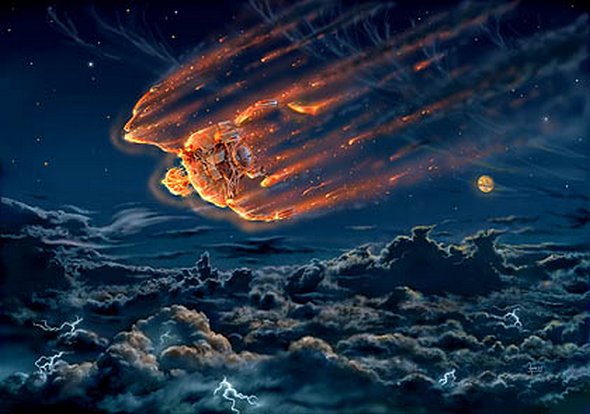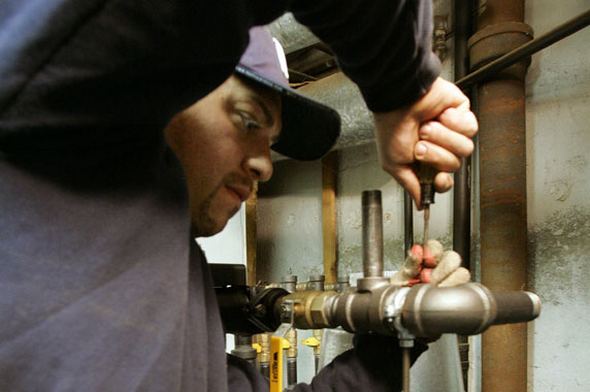Return to the Moon
 Why go to the Moon. Been there, done that
Why go to the Moon. Been there, done that
There are a couple of good reasons why we should return to the Moon.
First, it could serve well as a source of fuel, mineral and other elements the Earth lacks.
Secondly, the Moon could be used as a start point of further exploration of space.
Anyways, NASA has determined the dead lines. Building of a permanent lunar base should start in 2015, and that would be a great starting point to head to Mars, by the year 2030.
Read more
You MUST see cool photo galleries handpicked for YOU!
The Large Hadron Collider
The LHC
 Our understanding of the Universe is about to change…
Our understanding of the Universe is about to change…
The Large Hadron Collider (LHC) is a gigantic scientific instrument near Geneva, where it spans the border between Switzerland and France about 100 m underground. It is a particle accelerator used by physicists to study the smallest known particles – the fundamental building blocks of all things. It will revolutionise our understanding, from the minuscule world deep within atoms to the vastness of the Universe.
You MUST see cool photo galleries handpicked for YOU!
Discover satellite internet
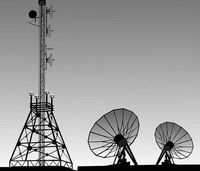 If you are currently relying on dialup Internet connectivity, you are likely suffering from a case of poor performance. This probably means that you are unable to use the Internet in the ways that you want. You probably have difficulty downloading email attachments, much less listening to streaming music or watching shows over the Internet. Dialup is significantly unsuitable for the modern Internet; at least for those who wish to do more than stare at their monitor for endless periods as a single picture loads. Below, you will find 7 reasons to ditch the dialup and get high-speed satellite Internet. Read more
If you are currently relying on dialup Internet connectivity, you are likely suffering from a case of poor performance. This probably means that you are unable to use the Internet in the ways that you want. You probably have difficulty downloading email attachments, much less listening to streaming music or watching shows over the Internet. Dialup is significantly unsuitable for the modern Internet; at least for those who wish to do more than stare at their monitor for endless periods as a single picture loads. Below, you will find 7 reasons to ditch the dialup and get high-speed satellite Internet. Read more
You MUST see cool photo galleries handpicked for YOU!
GPS makes driving easier
 GPS devices seem to be all the rage right now. Â The technology is coming equipped with more cell phones and cars every day. Â But GPS is not a silly gadget being marketed just for the holiday season. On the contrary, there are a variety of ways that GPS technology can help keep you safe and make your life easier every day.How GPS device makes your driving experience comfortable:
GPS devices seem to be all the rage right now. Â The technology is coming equipped with more cell phones and cars every day. Â But GPS is not a silly gadget being marketed just for the holiday season. On the contrary, there are a variety of ways that GPS technology can help keep you safe and make your life easier every day.How GPS device makes your driving experience comfortable:
Good directions. Getting lost while trying to find your destination can be much more than an inconvenience.  Criminals often target those individuals who don’t seem to know where they are.  GPS devices help you plan your trip in advance, and stay on course every step of the way. Read more
You MUST see cool photo galleries handpicked for YOU!
Green Development
Green development is becoming increasingly more popular with architects, builders and homeowners each year. Consumers’ environmental awareness is growing and they have come to demand more naturally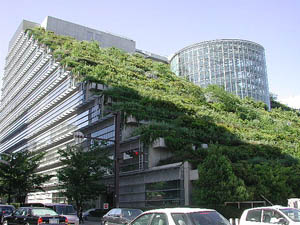
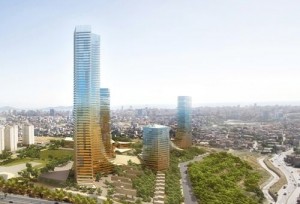
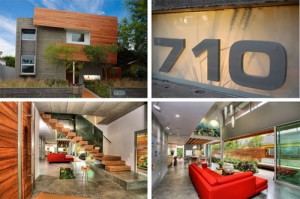
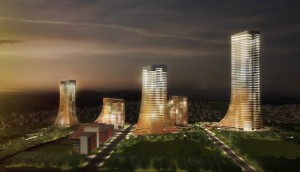

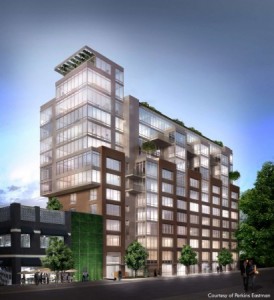
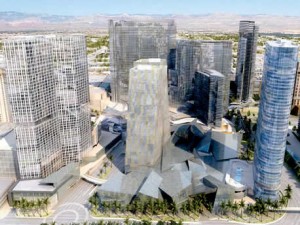 sustainable and recycled materials incorporated in the construction and renovation of their homes and favor homes that utilize construction and design techniques that improve energy efficiency and reduce indoor air pollution. These green home building techniques not only let homeowners feel good about leaving a smaller environmental footprint, but can provide long-term savings in utility bills. Does a greener house have to look like a yurt or geodesic dome like so many of the first-generation eco-houses of the 1970s? On the contrary, green-built homes are often indistinguishable from their traditional counterparts. Green buildings will, however, function much differently. Their heating and cooling costs will be lower if they are sited to maximize wind-sheltering trees and incorporate passive solar design principles. Green building is a growing segment of the new home and home renovation market. Go to any Homebuilders Expo these days and you’ll find plenty of vendors exhibiting green building products and services, from energy-efficient appliances to roof shingles made of recycled plastic to architecture firms that specialize in sustainable design. The hit television series Extreme Makeover: Home Edition has incorporated green building in many of its episodes, in part to help out its financially struggling families with lower energy and maintenance bills for the future, but also in recognition of this progressive trend in the building industry.
sustainable and recycled materials incorporated in the construction and renovation of their homes and favor homes that utilize construction and design techniques that improve energy efficiency and reduce indoor air pollution. These green home building techniques not only let homeowners feel good about leaving a smaller environmental footprint, but can provide long-term savings in utility bills. Does a greener house have to look like a yurt or geodesic dome like so many of the first-generation eco-houses of the 1970s? On the contrary, green-built homes are often indistinguishable from their traditional counterparts. Green buildings will, however, function much differently. Their heating and cooling costs will be lower if they are sited to maximize wind-sheltering trees and incorporate passive solar design principles. Green building is a growing segment of the new home and home renovation market. Go to any Homebuilders Expo these days and you’ll find plenty of vendors exhibiting green building products and services, from energy-efficient appliances to roof shingles made of recycled plastic to architecture firms that specialize in sustainable design. The hit television series Extreme Makeover: Home Edition has incorporated green building in many of its episodes, in part to help out its financially struggling families with lower energy and maintenance bills for the future, but also in recognition of this progressive trend in the building industry.
Realtors are finding that green architecture components are a good selling point for their listings. Home buyers in this relaxed housing market can be more selective about their many housing options and the long-term economies of green homes make for an attractive real estate package. Banks and financial lenders are also recognizing the investment value inherent in green construction and are responding by offering more favorable terms for these loan customers.
There is also the social trend of environmentalism as a way of life. Just as consumers are veering away from sport-utility vehicles and snapping up hybrid and more fuel-efficient cars, so too are prospective home buyers thinking twice about the status of traditionally-designed houses and thinking more about building green.
If you are interested in learning more about green design, check out your next home builders fair in your area or contact a local architect to discuss this exciting home building and renovation option. You’ll be happy you did.
Building materials typically considered to be green include rapidly renewable plant materials like bamboo and straw, lumber from forests certified to be sustainably managed, ecology blocks, dimension stone, recycled stone, recycled metal, and other products that are non-toxic, reusable, renewable, and/or recyclable.
The Environmental Protection Agency also suggests using recycled industrial goods, such as coal combustion products, foundry sand, and demolition debris in construction projects. Building materials should be extracted and manufactured locally to the building site to minimize the energy embedded in their transportation. Green buildings often include measures to reduce energy use. To increase the efficiency of the building envelope, the barrier between conditioned and unconditioned space, they may use high-efficiency windows and insulation in walls, ceilings, and floors. Another strategy, passive solar building design, is often implemented in low energy homes. Designers orient windows and walls and place awnings, porches, and trees to shade windows and roofs during the summer while maximizing solar gain in the winter. In addition, effective window placement can provide more natural light and lessen the need for electric lighting during the day. Solar water heating further reduces energy loads.
Finally, on site generation of renewable energy through solar power, wind power, hydro power, or biomass can significantly reduce the environmental impact of the building. Power generation is generally the most expensive feature to add to a building.
You MUST see cool photo galleries handpicked for YOU!
Shadow of doubt on extinction theory
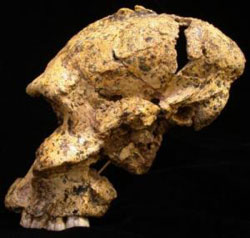
An upright hominid that lived side by side with direct ancestors of modern humans more than a million years ago had a far more diverse diet than once believed, clouding the notion that it was driven to extinction by its picky eating habits as the African continent dried, says a new University of Colorado at Boulder study.
The new study shows that Paranthropus robustus, once thought to be a “chewing machine” specializing in tough, low-quality vegetation, instead had a diverse diet ranging from fruits and nuts to sedges, grasses, seeds and perhaps even animals, said CU-Boulder anthropology Assistant Professor Matt Sponheimer. The findings cast doubt on the idea that its extinction more than 1 million years ago was linked to its diet, he said.
Paranthropus robustus skull from Swartkrans Cave, South Africa. (Image courtesy Darryl DeRuiter, Texas A&M University)
Paranthropus was part of a line of close human relatives known as australopithecines that includes the famous Ethiopian fossil Lucy that lived over 3 million years ago. Lucy is regarded by many anthropologists as the matriarch of modern humans.
“One line of Lucy’s children ultimately led to modern humans while the other was an evolutionary dead end,” he said. “Since we have now shown Paranthropus was flexible in its eating habits over both short and long intervals, we probably need to look to other biological, cultural or social differences to explain its ultimate fate.”
You MUST see cool photo galleries handpicked for YOU!
Destructive storm on Jupiter
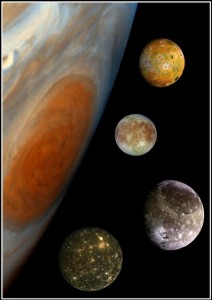 Planetary scientists detected that an anticyclone on Jupiter called the Little Red Spot produces winds up to 384 miles per hour, far exceeding the 156 mph mark that would make it a category five storm on Earth. Scientists measured wind speeds and directions by tracking the motion of cloud features from two image mosaics from a telescopic Long Range Reconnaissance Imager, taken 30 minutes apart. They combined the LORRI maps with visible-color images from Hubble, and mid-infrared images from the European Southern Observatory’s Very Large Telescope allowing scientists to “see” thermal structure and dynamics beneath the visible cloud layers.Jupiter’s Great Spot isn’t as great as it used to be. It’s actually been steadily shrinking for decades. Now, its younger, smaller sibling, the Little Red Spot, may be taking over the spotlight.The planet Jupiter looms out in space. Its famous feature, the Great Red Spot ” a massive, swirling storm ” can be seen from your backyard. “If you look at Jupiter through a telescope, it is the red spot you can see,” said Andrew Cheng, a planetary scientist at the Johns Hopkins Applied Physics Laboratory. Now, a newer, younger storm called the Little Red Spot is growing despite its name and proving to be fierce competition for the top spot on Jupiter. “Jupiter’s red spot is a not so little, giant storm,” Dr. Cheng said. “It’s like a hurricane except that its winds blow in the opposite direction”.
Planetary scientists detected that an anticyclone on Jupiter called the Little Red Spot produces winds up to 384 miles per hour, far exceeding the 156 mph mark that would make it a category five storm on Earth. Scientists measured wind speeds and directions by tracking the motion of cloud features from two image mosaics from a telescopic Long Range Reconnaissance Imager, taken 30 minutes apart. They combined the LORRI maps with visible-color images from Hubble, and mid-infrared images from the European Southern Observatory’s Very Large Telescope allowing scientists to “see” thermal structure and dynamics beneath the visible cloud layers.Jupiter’s Great Spot isn’t as great as it used to be. It’s actually been steadily shrinking for decades. Now, its younger, smaller sibling, the Little Red Spot, may be taking over the spotlight.The planet Jupiter looms out in space. Its famous feature, the Great Red Spot ” a massive, swirling storm ” can be seen from your backyard. “If you look at Jupiter through a telescope, it is the red spot you can see,” said Andrew Cheng, a planetary scientist at the Johns Hopkins Applied Physics Laboratory. Now, a newer, younger storm called the Little Red Spot is growing despite its name and proving to be fierce competition for the top spot on Jupiter. “Jupiter’s red spot is a not so little, giant storm,” Dr. Cheng said. “It’s like a hurricane except that its winds blow in the opposite direction”.
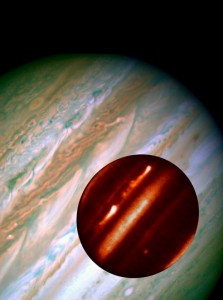
 The counter-clockwise winds make the storm an anticyclone, and for the first time, planetary scientists have recorded wind speeds of up to 385 mph, the highest ever detected on a planet. That’s 185 mph faster than any category 5 hurricane on earth. “It’s much bigger than any hurricanes that are found on earth”, Dr. Cheng said. “It’s bigger than earth itself”. The Little Red Spot started out white and recently turned red. Researchers believe increased wind speeds stirred up material that was exposed to ultraviolet radiation, causing a chemical change to make it look red. “Many features in Jupiter’s atmosphere change color from time to time”, Dr. Cheng said. “Now, it looks very much like the Great Red Spot. It’s just a smaller version of it”.
The counter-clockwise winds make the storm an anticyclone, and for the first time, planetary scientists have recorded wind speeds of up to 385 mph, the highest ever detected on a planet. That’s 185 mph faster than any category 5 hurricane on earth. “It’s much bigger than any hurricanes that are found on earth”, Dr. Cheng said. “It’s bigger than earth itself”. The Little Red Spot started out white and recently turned red. Researchers believe increased wind speeds stirred up material that was exposed to ultraviolet radiation, causing a chemical change to make it look red. “Many features in Jupiter’s atmosphere change color from time to time”, Dr. Cheng said. “Now, it looks very much like the Great Red Spot. It’s just a smaller version of it”.
By keeping an eye on all of Jupiter’s spots, scientists hope to get a better understanding of weather on other planet, too.
ABOUT THE LITTLE RED SPOT: The Little Red Spot on Jupiter is an anti-cyclonic storm formed by the merger of three separate storms observed since the 1930s. In 1998 two of the storms came together and were joined in 2000 by a third to form a storm roughly the size of the planet Earth. Using data from recent telescope and spacecraft observations, scientists determined that the storm has some of the highest wind speeds ever detected on any planet. In 2005 it started turning red for unknown reasons, and now it looks similar to its larger, more famous neighbor, the Great Red Spot. The peak wind speed for the Little Red Spot is in excess of 384 miles per hour.
WHAT IS AN ANTI-CYCLONE? Unlike hurricanes, which rotate around a center of low pressure, anti-cyclones rotate around centers of high pressure. On earth that means that air at lower elevations is forced away from the center, creating an opening that pulls cold air down from above. That leads to low humidity and few clouds. On Earth, anticyclones are often predictors of fair weather, though special conditions can create anti-cyclonic tornadoes. There are examples of anti-cyclonic storms on other planets, such as Jupiter, Saturn, and Neptune.

